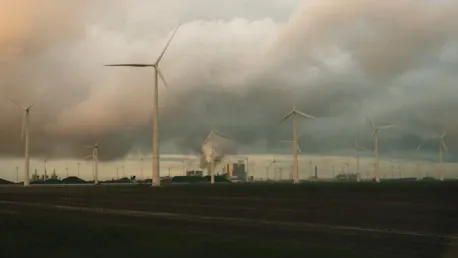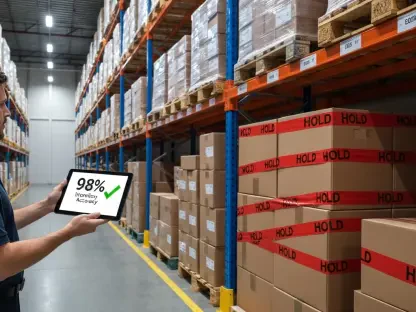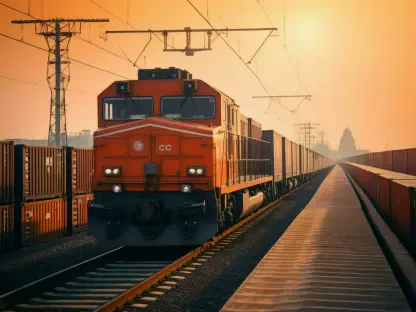In recent years, South Africa has witnessed a significant transition from rail to road freight, a shift driven largely by the rampant theft of cables and destruction of rail infrastructure. This has resulted in higher environmental costs as trucks consume more fuel and emit more greenhouse gases compared to trains. Between the fiscal years of 2017/18 and 2022/23, roughly a third of long-distance freight moved from rail to road, marking a profound change in the country’s logistics landscape. The situation has been particularly acute at the Durban Container Terminal Pier 2, where over-border units have experienced a dwell time of up to 22 days. This inefficiency disrupts supply chains, leaving logistics companies with no alternative but to turn to road transport despite rising fuel costs and a shortage of skilled personnel for driving trucks.
The environmental repercussions of this shift are severe, placing immense pressure on ecosystems as the increased reliance on trucks significantly boosts CO2 emissions. The transport sector already stands as the third largest emitter of greenhouse gases in South Africa, contributing a staggering 55 megatons of CO2 annually. Alarmingly, road transport alone accounts for 91.2% of these emissions. This trend not only undermines the country’s environmental goals but also poses long-term challenges for sustainable transport planning.
Responding to Environmental Concerns
In response to the escalating environmental concerns, Bidvest International Logistics (BIL) has suggested several strategies aimed at reducing CO2 emissions from both road and rail freight sectors. Key among these strategies is the promotion of efficient driving habits to optimize fuel consumption. Alongside, route optimization using advanced software can significantly reduce unnecessary fuel expenditure by mapping the most energy-efficient routes. Proper vehicle maintenance is also emphasized, as well-maintained engines perform better and emit fewer pollutants. Upgrading to more fuel-efficient vehicles offers another practical solution. The introduction of electric trucks and compressed natural gas vehicles, as well as Euro 5 and Euro 6 engines, has been proposed as viable options to mitigate environmental impacts.
Implementing these measures not only contributes to environmental preservation but also provides tangible business benefits. Companies adopting these strategies can gain a competitive edge in terms of Environmental, Social, and Governance (ESG) compliance, a metric increasingly critical for investor confidence. Reducing carbon tax liabilities and lowering maintenance costs are additional financial incentives for companies willing to make this shift. The cumulative effect of these strategies can help create a more sustainable logistics industry, balancing economic and environmental objectives.
The Government’s Green Transport Initiatives
The South African government is also actively seeking to address these environmental challenges through its Green Transport Strategy. This ambitious initiative aims to reduce emissions by 5% annually. However, despite these efforts, substantial volumes of greenhouse gases continue to be released into the atmosphere. As part of its solution, the government is focusing on modernizing the rail infrastructure. Investments in green technologies like hydrogen-powered and electric locomotives are seen as crucial steps towards reducing the environmental footprint of the rail sector.
Beginning in April 2025, Transnet Freight Rail will face competition from private entities, a development expected to catalyze significant investments and enhancements in the rail network. This competition could spur the adoption of advanced technologies and operational improvements, thereby making rail transport more reliable and attractive. The potential benefits of this modernized rail system are manifold, ranging from reduced congestion on roads to lower overall emissions.
An Integrated Multimodal Transport Approach
In recent years, South Africa has experienced a marked shift from rail to road freight, primarily driven by rampant cable theft and rail infrastructure destruction. This transition has led to higher environmental costs, as trucks consume more fuel and emit more greenhouse gases than trains. From the fiscal years 2017/18 to 2022/23, about a third of long-distance freight shifted from rail to road, fundamentally altering the country’s logistics landscape. This issue is particularly pronounced at the Durban Container Terminal Pier 2, where cross-border units can face dwell times of up to 22 days, disrupting supply chains. Consequently, logistics companies are forced to rely on road transport, despite the rising fuel costs and a shortage of skilled truck drivers.
The environmental repercussions of this shift are severe, significantly increasing CO2 emissions. The transport sector is already the third largest emitter of greenhouse gases in South Africa, contributing 55 megatons of CO2 annually, with road transport alone accounting for a staggering 91.2% of these emissions. This trend undermines the country’s environmental goals and presents long-term challenges for sustainable transport planning.









